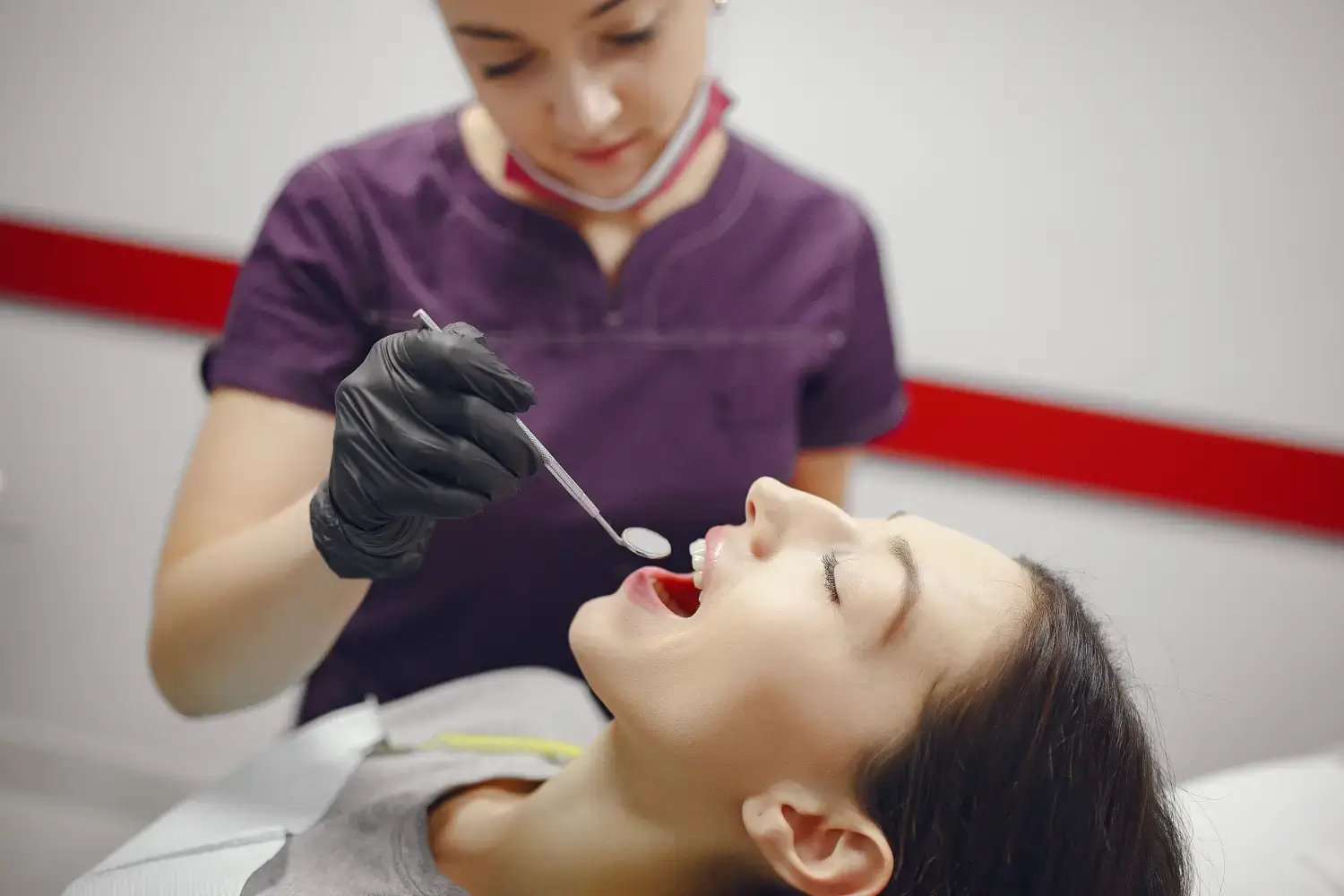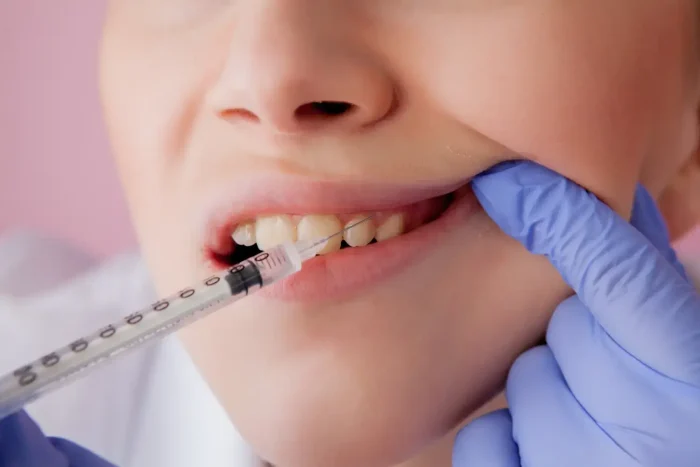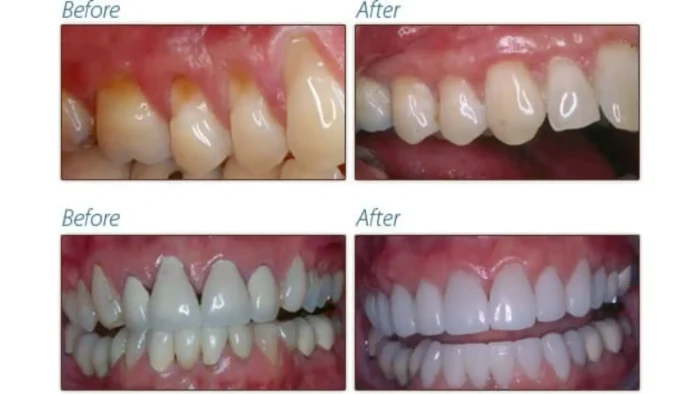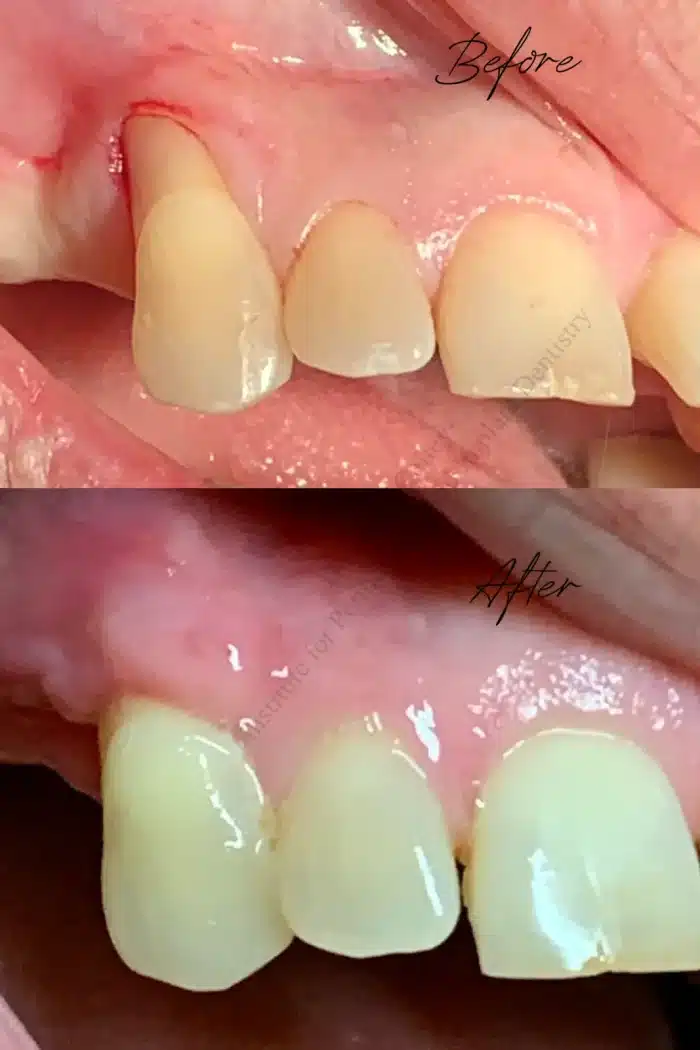
Plasmolifting for Gums – Stimulating Healing and Tissue Regeneration
Plasmolifting
2025-02-04
Learn about Plasmolifting for gums, a treatment that stimulates healing and tissue regeneration. Using PRP, this method addresses gum recession, periodontal disease, and promotes overall oral health.
Joanna Carr
Studies show that nearly 42% of adults aged 30 and older have some form of periodontal (gum) disease. Chronic conditions like periodontitis can lead to tooth loss and are associated with systemic health risks such as heart disease and diabetes.
Plasmolifting has gained attention for its natural and regenerative approach to gum health. This therapy harnesses the healing power of a patient’s own blood plasma to accelerate tissue repair and regeneration, reducing the need for synthetic treatments. Its minimally invasive nature makes it a promising alternative for those seeking a more holistic approach to periodontal care.
This article will examine how Plasmolifting for gums works, its scientific foundations, and its potential to revolutionize gum health through tissue regeneration.
Key Takeaways
- Plasmolifting for gums is a platelet-rich plasma (PRP) therapy that uses a patient’s blood to stimulate healing and tissue regeneration.
- The process involves drawing blood, isolating PRP, and injecting it into affected gum areas to deliver growth factors that promote cell repair.
- Patients typically undergo three to four sessions spaced one month apart, each lasting 30-45 minutes, with post-care guidelines to support healing.
- This treatment reduces inflammation, aids in gum recession, and accelerates recovery, improving overall gum health.
- As a natural and minimally invasive procedure, Plasmolifting carries minimal risk of allergic reactions or infections, ensuring a safe treatment experience.
- Plasmolifting can be combined with other dental treatments to enhance results and support comprehensive oral health.
About: Doctor Medica is your trusted supplier of top-quality dermal fillers, viscosupplements, and more for your medical practice. We offer genuine products from leading brands at the lowest prices. Contact Doctor Medica today to order Plasmolifting online.
Mechanism of Action in Gum Health
Plasmolifting is a platelet-rich plasma (PRP) therapy that harnesses a patient’s blood plasma to accelerate gum healing and regeneration. Widely used in dentistry, this technique enhances tissue repair, reduces inflammation, and supports overall oral health.
The process begins with drawing a small amount of blood from the patient. The sample is then spun in a centrifuge to isolate platelet-rich plasma (PRP) from other blood components. Once prepared, the PRP is carefully injected into affected gum areas, releasing growth factors that stimulate tissue repair and regeneration. These platelets also contain proteins and bioactive substances that promote cell growth, accelerate healing, and enhance gum recovery.
Techniques for Administration

Plasmolifting for gums is performed by dentists and periodontists specializing in regenerative treatments. This quick, minimally invasive procedure can be done under local anesthesia. Like Plasmolifting for the face, it utilizes the body’s natural healing properties to restore gum health and stimulate tissue regeneration.
Injection Methods and Protocols
- Direct injection into receding or inflamed gums to accelerate healing.
- Post-surgical application after gum surgery or deep cleaning to enhance recovery.
- PRP-infused gels and mouth rinses as less invasive alternatives.
For optimal results, patients typically undergo one session per month for three to four months. Each session lasts approximately 30–45 minutes. Post-treatment care is essential, and patients should avoid spicy foods, alcohol, and smoking to support proper healing and maximize gum regeneration.
Clinical Applications and Patient Outcomes
Plasmolifting has demonstrated remarkable success in dental treatments, significantly enhancing gum health and reducing recovery time.
Before treatment, the gums appear inflamed, receding, and prone to bleeding, often accompanied by noticeable sensitivity and discomfort. Signs of gum disease, such as redness, swelling, and exposed tooth roots, may be present. In severe cases, the tissue appears thin and fragile, affecting both oral health and aesthetics.

Image Courtesy of Dentica
After Plasmolifting, the gums look healthier, firmer, and more resilient. Inflammation is visibly reduced, and the tissue appears more hydrated and regenerated. Sensitivity and bleeding diminish, while gum recession shows noticeable improvement. The overall gum structure strengthens, promoting better oral health and a more confident smile.
This next image displays a receding gumline with exposed tooth roots. The affected gum tissue appears thin, inflamed, and slightly red, indicating irritation or possible periodontal disease. There may also be signs of gum recession, where the gum has pulled away from the tooth, leaving it more vulnerable to sensitivity and potential damage.

Image Courtesy of Institute for Periodontics and Implant Dentistry
There are significant improvements following PRP therapy. The gum tissue appears healthier, thicker, and more robust, covering more of the exposed tooth root. The inflammation and redness have visibly reduced, and the overall gum structure looks more hydrated and resilient. The smoother, firmer appearance suggests enhanced healing and collagen production, which PRP stimulates.
Conclusion
Plasmolifting for gums is a groundbreaking treatment that harnesses the body’s natural healing power to promote tissue regeneration and improve oral health. By using platelet-rich plasma (PRP), this technique reduces inflammation, accelerates recovery, and strengthens gum tissue—all without synthetic chemicals or invasive procedures.
As a safe and minimally invasive option, Plasmolifting is ideal for patients dealing with gum recession, post-surgical healing, or chronic inflammation. Its ability to enhance gum health and support long-term wellness makes it a valuable solution for those seeking effective, natural treatment for periodontal concerns.
FAQs
1. Is Plasmolifting for gums safe?
Yes, Plasmoscopy is very safe. It uses the patient’s blood plasma, reducing the risk of allergic reactions or infections. Many practitioners in regenerative medicine and dentistry use plasmolifting to repair and heal tissue.
2. How many Plasmolifting sessions are needed for gum health?
Most patients require three to four sessions spaced about one month apart. However, the exact number of treatments depends on the severity of gum issues and individual healing response.
3. Does Plasmolifting help with receding gums?
Yes, Plasmolifting stimulates collagen production and tissue regeneration, helping restore lost gum tissue and strengthen weakened gums. It is particularly beneficial for patients with mild to moderate gum recession.
4. Can practitioners combine Plasmolifting with other dental treatments?
Plasmolifting can complement deep cleanings, laser therapy, and dental surgeries to enhance healing and improve treatment outcomes. It can also work well with cosmetic treatments like facial Plasmolifting face full-body regenerative benefits.
References
Centers for Disease Control and Prevention. (n.d.). Gum (periodontal) disease. U.S. Department of Health & Human Services. Retrieved October 29, 2023, from https://www.cdc.gov/oral-health/about/gum-periodontal-disease.html
Albanese, A., Licata, M. E., Polizzi, B., & Campisi, G. (2013). Platelet-rich plasma (PRP) in dental and oral surgery: from wound healing to bone regeneration. Immunity & ageing : I & A, 10(1), 23. https://doi.org/10.1186/1742-4933-10-23
Related Articles
Joanna Carr
Sculptra For Buttocks – A Non-Surgical Lift
Achieve a fuller, lifted look with Sculptra for buttocks. Discover how this non-surgical option enhances curves and boosts volume naturally.
Joanna Carr
Mirena and Menopause – What You Need to Know
Discover how the Mirena IUD impacts menopause symptoms, its benefits, and considerations for women approaching or experiencing menopause.
Joanna Carr
Lipedema vs. Cellulite: What Sets Them Apart?
Have an interest in learning about What Sets Apart Lipedema vs. Cellulite? Browse Doctor Medica's extensive archive of blog postings.


